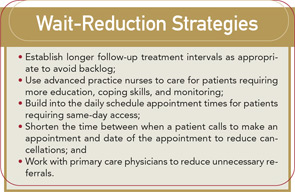Dr. Harrington recommends using a standardized history form that uses branching logic. Give the form to patients while they are in the waiting room and have NPs and PAs who have training in the protocols assist the patient and then provide a summary to the rheumatologist before the actual patient time with the doctor. The standard form has a disease activity score that the NP or PA then can use to qualify the patient’s needs. “We need to learn how to function like dentists and use other clinical staff (e.g., the dental hygienist) to share the workload,” says Dr. Harrington.
He also urges rheumatology practices to switch to electronic medical records (EMRs). (See “Go Digital,” p. 1.) Despite their proven ability to enhance practice management and streamline patient care, only 15% of rheumatologists currently use EMRs.
The technological changes like EMRs and changes in practice organization and design provide a backdrop for fundamental workforce supply and demand and for the primary goal of improving patient outcomes.
“All of the things that we have identified as improvements in practice also improve patient outcomes,” says Dr. Harrington. He stresses that the ACR workforce study report is just the opening round of the discussion on how to further improve.
Retirement Effects
The workforce study highlighted the need to increase the number of U.S. rheumatologists in order to meet future demand for services. One key factor in whether the supply of specialists in the future will meet the demand is the number of rheumatologists planning to retire in the next five to 10 years. Rates of retirement are not available for rheumatologists specifically, but general data on physician specialists suggests what the workforce study called “substantial declines” in rheumatologists between age 59 and 68. “Beyond age 68, the labor force participation rates level off with about 60% of male and 40% of female professionals continuing to participate in the labor force through age 75 at which point the predictive model assumes all rheumatologists will have retired.”
The workforce survey asked respondents when they planned to reduce their work efforts either prior to or at full retirement. Younger rheumatologists plan to reduce work effort earlier than their older counterparts, as do women. This data may be biased because any physicians currently older than 60 who have retired were not counted in the results. Overall, rheumatologists expressed satisfaction with their current work level and environment. About half said they would like their current workload to remain the same; the other half said they wanted their workload to decrease.

